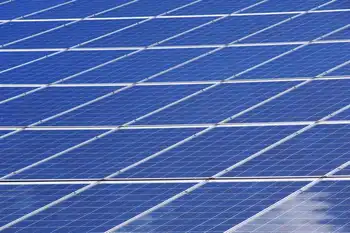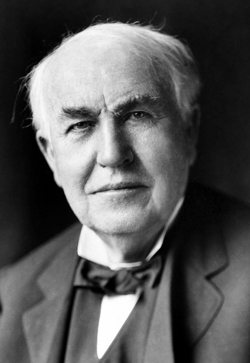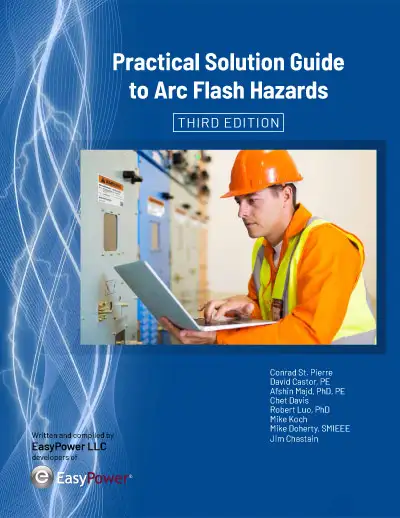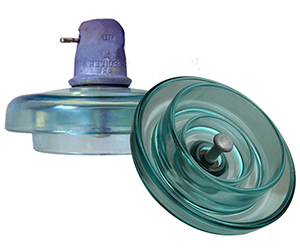Here's why the U.S. electric grid isn't running on 100% renewable energy yet

NFPA 70e Training - Arc Flash
Our customized live online or in‑person group training can be delivered to your staff at your location.

- Live Online
- 6 hours Instructor-led
- Group Training Available
US Renewable Energy Transition is the shift from fossil fuels to wind, solar, and nuclear, targeting net-zero emissions via grid modernization, battery storage, and new transmission to replace legacy plants and meet rising electrification.
Key Points
The move to decarbonize electricity by scaling wind, solar, and nuclear with storage and transmission upgrades.
✅ Falling LCOE makes wind and solar competitive with gas and coal.
✅ 4-hour lithium-ion storage shifts solar to evening peak demand.
✅ New high-voltage transmission links resource-rich regions to load.
Generating electricity to power homes and businesses is a significant contributor to climate change. In the United States, one quarter of greenhouse gas emissions come from electricity production, according to the Environmental Protection Agency.
Solar panels and wind farms can generate electricity without releasing any greenhouse gas emissions, and recent research suggests wind and solar could meet about 80% of U.S. demand with supportive infrastructure. Nuclear power plants can too, although today’s plants generate long-lasting radioactive waste, which has no permanent storage repository.
But the U.S. electrical sector is still dependent on fossil fuels. In 2021, 61 percent of electricity generation came from burning coal, natural gas, or petroleum. Only 20 percent of the electricity in the U.S. came from renewables, mostly wind energy, hydropower and solar energy, according to the U.S. Energy Information Administration, and in 2022 renewable electricity surpassed coal nationwide as portfolios shifted. Another 19 percent came from nuclear power.
The contribution from renewables has been increasing steadily since the 1990s, and the rate of increase has accelerated, with renewables projected to reach one-fourth of U.S. generation in the near term. For example, wind power provided only 2.8 billion kilowatt-hours of electricity in 1990, doubling to 5.6 billion in 2000. But from there, it skyrocketed, growing to 94.6 billion in 2010 and 379.8 billion in 2021.
That’s progress, as the U.S. moves toward 30% electricity from wind and solar this decade, but it’s not happening fast enough to eliminate the worst effects of climate change for our descendants.
“We need to eliminate global emissions of greenhouse gases by 2050,” philanthropist and technologist Bill Gates wrote in his 2023 annual letter. “Extreme weather is already causing more suffering, and if we don’t get to net-zero emissions, our grandchildren will grow up in a world that is dramatically worse off.”
And the problem is actually bigger than it looks, even as pathways to zero-emissions electricity by 2035 are being developed.
“We need not just to create as much electricity as we have now, but three times as much,” says Saul Griffith, an entrepreneur who’s sold companies to Google and Autodesk and has written books on mass electrification. To get to zero emissions, all the cars and heating systems and stoves will have to be powered with electricity, said Griffith. Electricity is not necessarily clean, but at least it it can be, unlike gas-powered stoves or gasoline-powered cars.
The technology to generate electricity with wind and solar has existed for decades. So why isn’t the electric grid already 100% powered by renewables? And what will it take to get there?
First of all, renewables have only recently become cost-competitive with fossil fuels for generating electricity. Even then, prices depend on the location, Paul Denholm of the National Renewable Energy Laboratory told CNBC.
In California and Arizona, where there is a lot of sun, solar energy is often the cheapest option, whereas in places like Maine, solar is just on the edge of being the cheapest energy source, Denholm said. In places with lots of wind like North Dakota, wind power is cost-competitive with fossil fuels, but in the Southeast, it’s still a close call.
Then there’s the cost of transitioning the current power generation infrastructure, which was built around burning fossil fuels, and policymakers are weighing ways to meet U.S. decarbonization goals as they plan grid investments.
“You’ve got an existing power plant, it’s paid off. Now you need renewables to be cheaper than running that plant to actually retire an old plant,” Denholm explained. “You need new renewables to be cheaper just in the variable costs, or the operating cost of that power plant.”
There are some places where that is true, but it’s not universally so.
“Primarily, it just takes a long time to turn over the capital stock of a multitrillion-dollar industry,” Denholm said. “We just have a huge amount of legacy equipment out there. And it just takes awhile for that all to be turned over.”
Intermittency and transmission
One of the biggest barriers to a 100% renewable grid is the intermittency of many renewable power sources, the dirty secret of clean energy that planners must manage. The wind doesn’t always blow and the sun doesn’t always shine — and the windiest and sunniest places are not close to all the country’s major population centers.
Wind resources in the United States, according to the the National Renewable Energy Laboratory, a national laboratory of the U.S. Department of Energy.
Wind resources in the United States, according to the the National Renewable Energy Laboratory, a national laboratory of the U.S. Department of Energy.
National Renewable Energy Laboratory, a national laboratory of the U.S. Department of Energy.
The solution is a combination of batteries to store excess power for times when generation is low, and transmission lines to take the power where it is needed.
Long-duration batteries are under development, but Denholm said a lot of progress can be made simply with utility-scale batteries that store energy for a few hours.
“One of the biggest problems right now is shifting a little bit of solar energy, for instance, from say, 11 a.m. and noon to the peak demand at 6 p.m. or 7 p.m. So you really only need a few hours of batteries,” Denholm told CNBC. “You can actually meet that with conventional lithium ion batteries. This is very close to the type of batteries that are being put in cars today. You can go really far with that.”
So far, battery usage has been low because wind and solar are primarily used to buffer the grid when energy sources are low, rather than as a primary source. For the first 20% to 40% of the electricity in a region to come from wind and solar, battery storage is not needed, Denholm said. When renewable penetration starts reaching closer to 50%, then battery storage becomes necessary. And building and deploying all those batteries will take time and money.















